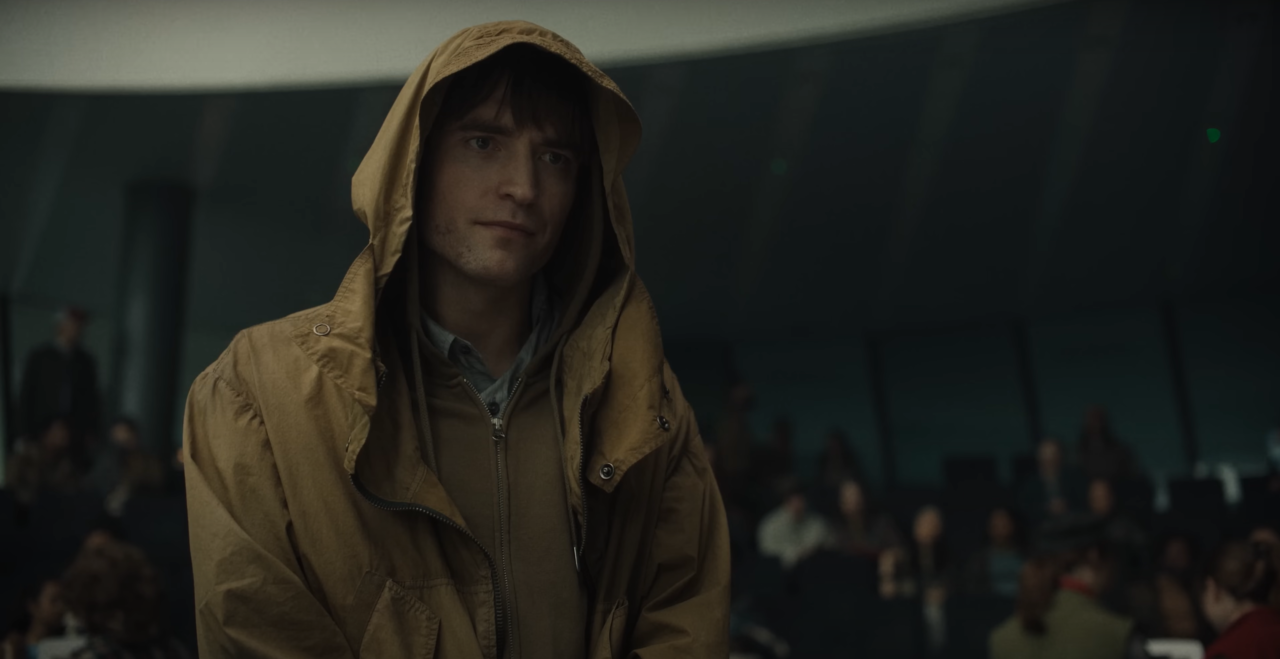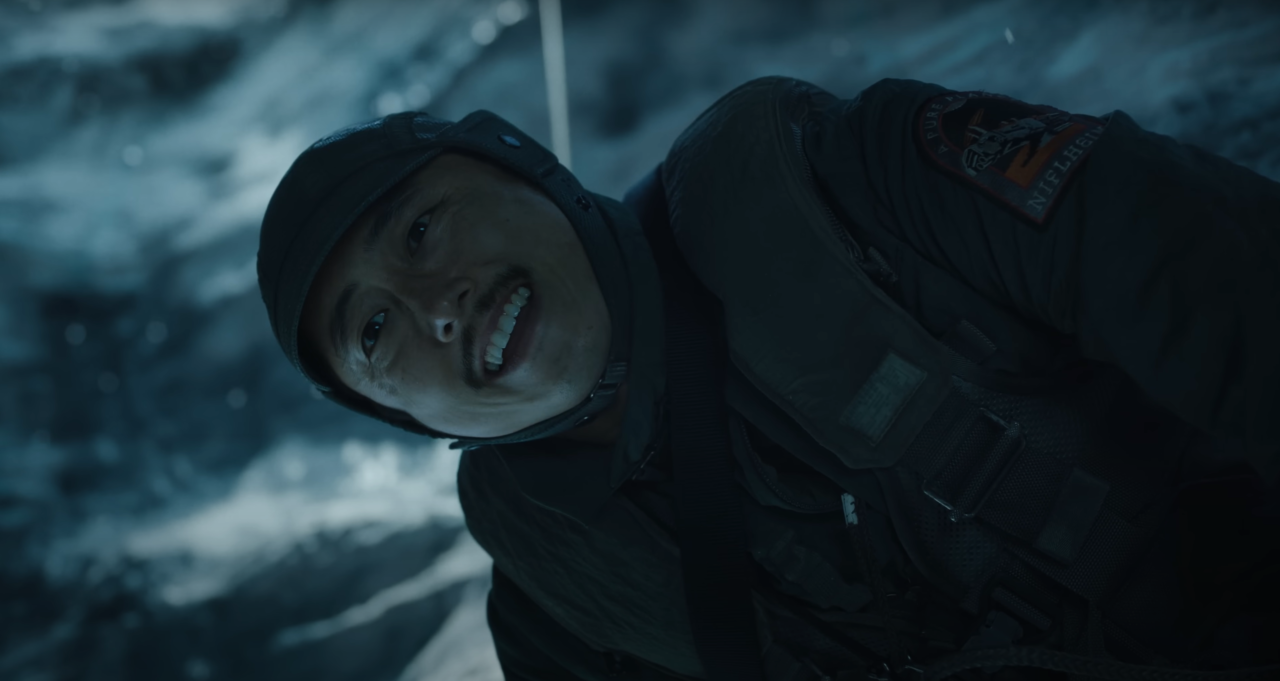Meet Mickey, the most overworked employee in space and probably the most experienced at dying. If given the chance to feel immortal through endless reprints, would Kingos be up for the job? Travel to space with the Sungkyun Times (SKT) and into the world of Mickey 17, where each Mickey reprint invites one to ponder how it feels to live, die, and feel it every time.
Into the Thick of It
-Anticipation Set for Space
Mickey 17 is a science-fiction (sci-fi) dark comedy directed by Korean filmmaker Bong Joon-ho and adapted from Edward Ashton’s 2022 novel Mickey7. Set in the future, it follows a man who takes on a deadly job in space to escape loan sharks on Earth as he navigates death, love, and his freshly printed clone. Beyond this intriguing plot, anticipation for the movie was high as it marks the eighth film by Bong, who attained global recognition after winning four Academy Awards for his 2019 movie Parasite. His directing remains widely acclaimed for its careful portrayal of class divides, as also seen in Snowpiercer, released in 2013, which mirrors Mickey 17 in both its sci-fi genre and takes on classism in a dystopian world. The film also features a cast of renowned actors, with Robert Pattinson, known for his role in Twilight, as Mickey, and Mark Ruffalo, from The Avengers series, playing Kenneth Marshall, the dictatorial leader behind the space exhibition. Complete with a compelling premise and a top-tier cast, Mickey 17 signals Bong’s return to the theaters with another satirical and thought-provoking tale.

-Synopsis (*Spoiler Alert)
Mickey Barnes, desperate to flee from loan sharks, signs up for a human expedition to an ice planet called Nilfheim. As an Expendable, his job is to die and be cloned repeatedly as part of an experiment to colonize the planet and make it habitable. However, after Mickey survives his 17th run and returns to life, his world spirals out of control when he faces the newly printed Mickey 18. With two copies — multiples — being illegal, the pair face a critical decision: fight each other to death or join forces. As the situation escalates with extraterrestrial creatures and the higher-ups on their tails, can they survive together?
Different Mickeys, Different Takes
-Left in the Cold
Much like the Mickeys’ contrasting personalities, thoughts on the movie have been divided. Despite a production budget of $118 million, an honored director, and a talented cast, critics were let down by the heavy-handed script, which constantly reminded the audience of the film’s message instead of leaning into nuance. For instance, Marshall’s exaggerated mannerisms and idea for a pure colony, which may have aimed to reflect American imperialism, were pointed out for lacking subtlety. In addition, the plot faced criticism for its underdeveloped characters, particularly Nasha, who is Mickey’s love interest and the ship’s security officer. Nasha is portrayed as Mickey’s support during his most challenging moments. Yet, her backstory and motivations behind joining the expedition or falling for him remain unexplored, making her feel like a mere plot device. As a result, it underperformed relative to Bong’s acclaimed films, with only a 77% critic rating on the movie review site Rotten Tomatoes and reportedly losing about $80 million at the box office. Mickey 17 is considered a rare setback in Bong’s otherwise incredible cinematic back catalogue — an ambitious production that ultimately fell short of expectations.
-A Warmth in the Cold
Behind the criticism, there have also been voices expressing astonishment, praising the film for its captivating visuals and sound, and its exaggerated but realistic portrayal of society. Bong’s cinematography envelops the audience in the cold, dim atmosphere of the ice planet, exhibiting serenity in the vastness of space, which contrasts with the chaos ensuing on the ship. This scenic visualization is paired with a delicate score by Korean composer Jung Jae-il, best known for his work on Parasite. His waltz score, Bon Appetit, plays in the background as Mickey narrates his life cycle, emphasizing a calming tone tinged with despair. Besides the production, critics praised the film for amusingly exploring the concept of death through a sci-fi lens without falling too far from Bong’s trademark social commentary. Pete Hammond, a chief film critic at Deadline, expressed, “Mickey 17 is about dehumanization, class divide, superiority by those most inferior and a feeling we are all falling down the rabbit hole — until we find a way to climb out.” The existential dilemma Mickey faces as an Expendable offers a bleak critique on survival and death in an unequal society, hence the recurring question of what it feels like to die.
Woe Is Mickey
-“I should have read through it.”
Maybe Mickey should have read through the paperwork before applying to be an Expendable because he is in for a wild ride.

-“What's it feel like to die?”
About to be left for dead, Mickey’s friend and colleague, Timo, asks the one question everyone wants to know.

While Mickey 17 might come across as an over-the-top space trip, it leaves a lingering question about what it means to live. Even without a memory chip or a body-printing machine, traces of life remain in the faces, words, and moments that refuse to fade. Perhaps Mickey chose not to escape death, but to live with it, because even without perpetual resurrection, remnants of his life will live on forever.
